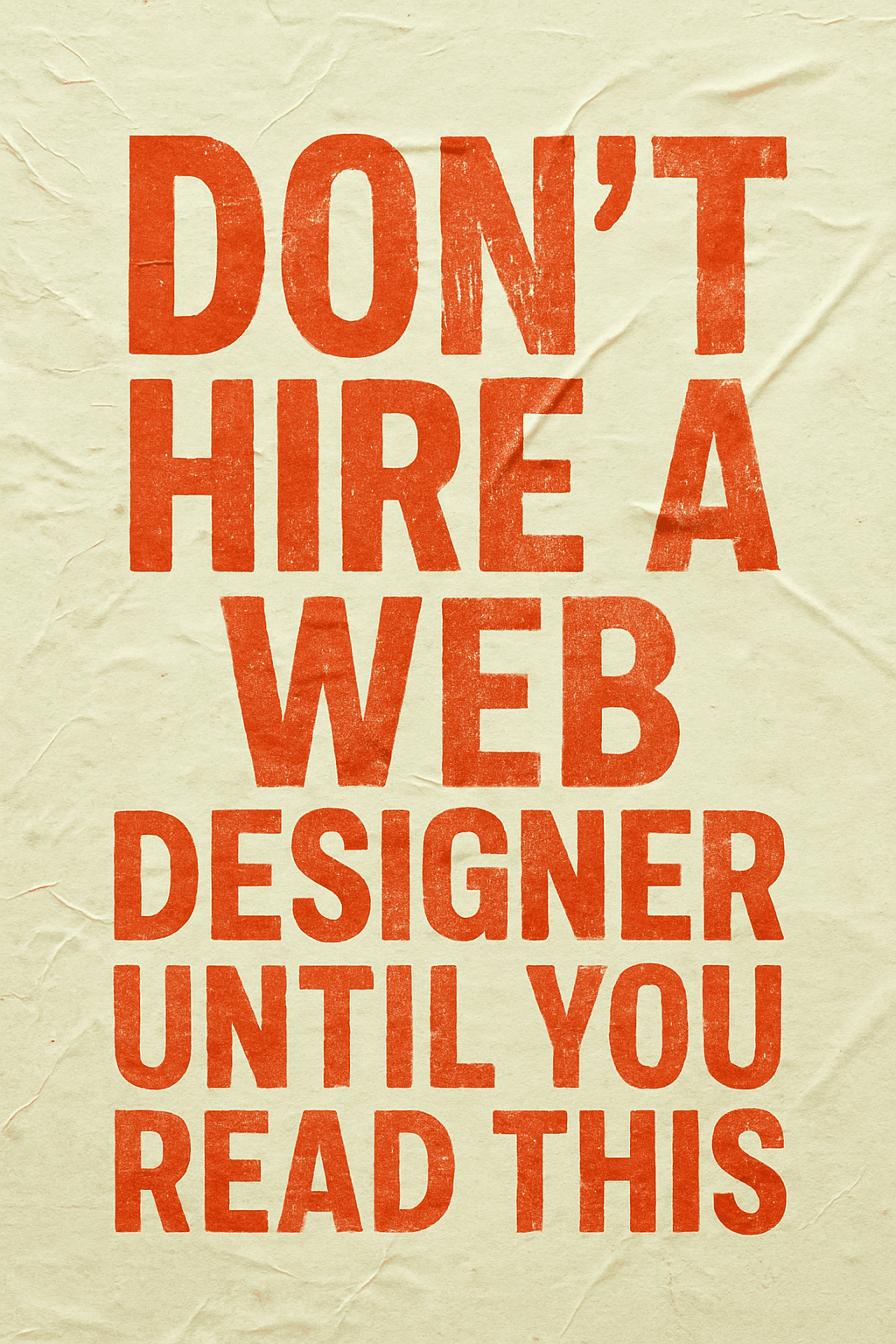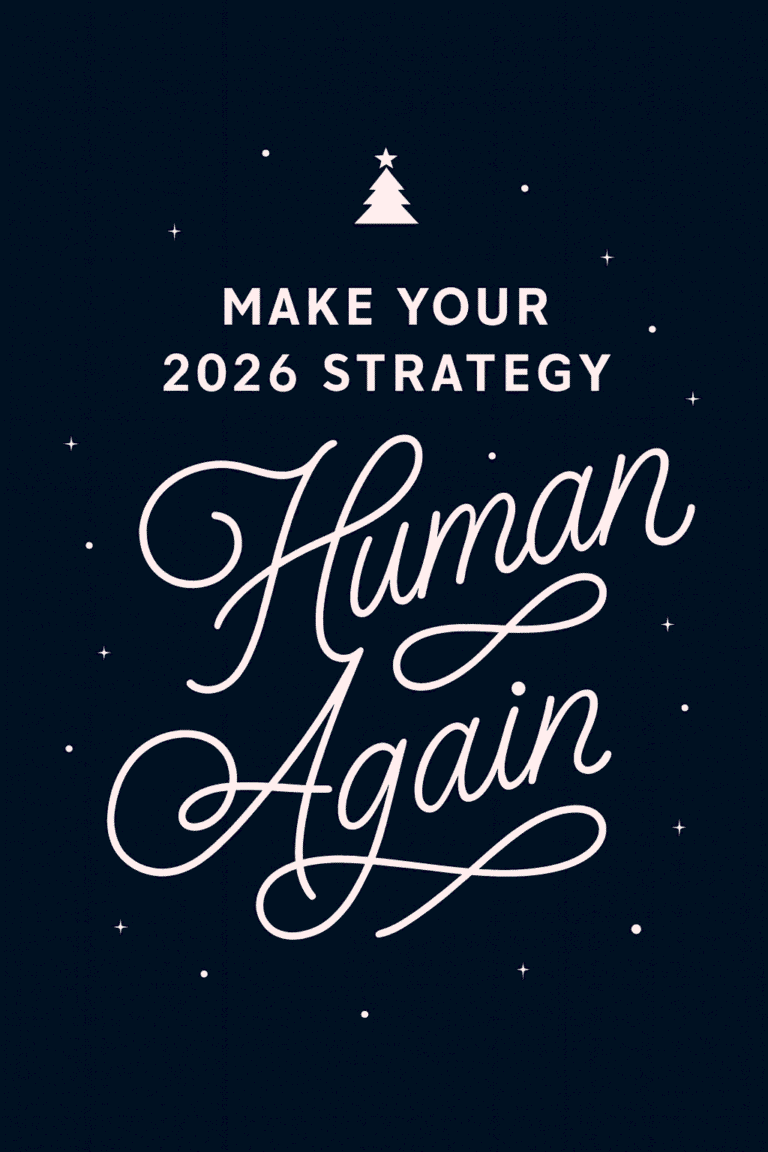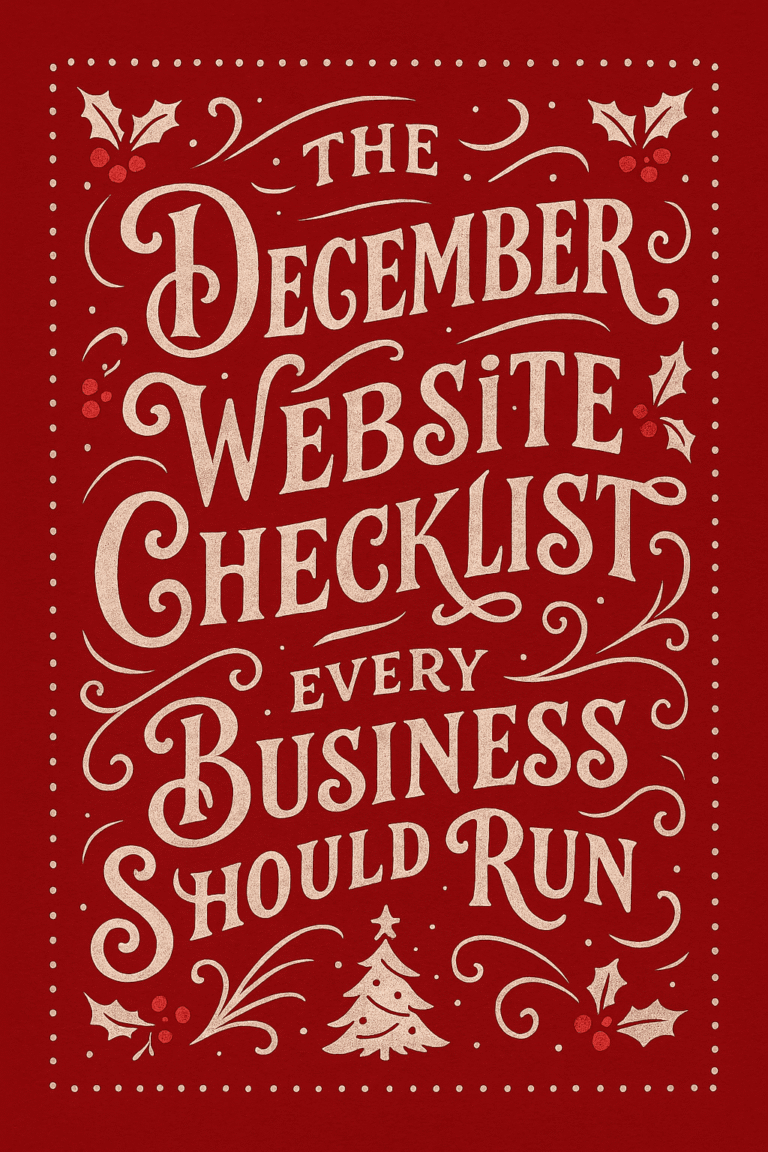
If you’re thinking about hiring someone to build your website, hang on a second. We’re not going to talk you out of it—but we are going to make sure you don’t waste your money.
We’ve seen it happen too many times. A business hires a web designer because they know they need a website. The problem? They don’t know what kind of website, what goals it should serve, or even what questions to ask before they sign on the dotted line.
And that’s when things go sideways.
This post will walk you through what to think about before hiring a web designer, what most designers won’t tell you, and how to get the most out of your investment—so your website isn’t just a digital brochure, but a tool that drives real results.
The Truth Most Designers Won’t Tell You
Let’s start here: You don’t need a web designer.
At least, not until you know why you need one and what you want them to build.
Hiring a designer before you have a strategy is like hiring a contractor to remodel your kitchen without having a floor plan, budget, or even knowing if you cook. You’re going to end up with something pretty—but it might not actually work.
Web design is part of a much bigger system. A solid website requires clear messaging, good content, fast performance, search engine optimization, user experience design, mobile responsiveness, and more.
And that’s before we get to how it fits into your sales process, brand strategy, or marketing funnel.
Ask These Questions Before You Hire Anyone
If you can’t answer these yet, you’re not ready to hire a designer. And that’s okay.
1) What is the primary goal of your website?
This seems obvious, but many businesses can’t answer it.
Are you trying to:
- Generate leads?
- Make sales online?
- Attract better clients?
- Recruit new team members?
- Educate potential customers?
Your website can’t do everything equally well. You’ve got to pick a main focus.
2) Who is your ideal visitor—and what do you want them to do?
If you can describe your best customer, you’ll design a site that actually talks to them. If you try to talk to everyone, you’ll end up with something that connects with no one.
3) What content do you already have—and what needs to be created?
Most people underestimate how much content is needed for a strong website: photos, product/service descriptions, team bios, FAQs, testimonials, videos, blog posts, etc.
If you don’t have a plan for this, you’ll either delay the launch or end up with filler content that doesn’t move the needle.
4) What does success look like 3 months after launch?
Define your success metrics early. That could be:
- Number of quote requests
- Sales through the site
- Calls from your contact page
- Increase in traffic or time on site
- Rankings in Google
Design should serve those outcomes—not just aesthetics.
Don’t Fall for These Common Web Design Traps
“We’ll Make It Look Great!”
Design matters. But looks aren’t everything. We’ve seen beautiful websites that perform horribly—because they were built around style instead of strategy.
A great-looking website that doesn’t generate leads or sales is like a Ferrari with no engine.
“You Can Just Use a Template”
Templates can work for some businesses starting out, but if you want a site that actually sets you apart and works long-term, you’ll eventually hit a wall.
Custom design lets you tailor your site to your goals, brand, and customer experience. Cookie-cutter templates can’t do that.
“It’ll Only Cost $500”
Cheap websites are expensive in the long run.
They usually lack performance optimization, don’t follow SEO best practices, aren’t mobile-friendly, and rarely have any strategy baked in.
You’ll either end up rebuilding it or paying someone to fix it later.
What to Look for in a Web Design Partner
You’re not just hiring someone to make your site look good. You’re hiring someone to think with you, solve problems, and build something that works.
Strategic Thinking
They should be asking about your business goals, target audience, brand tone, marketing plans, and future growth. If they’re only asking what colors you like, walk away.
SEO & Content Knowledge
If your designer can’t talk confidently about how search engines work, how users consume content, and how your pages will rank—find someone else.
Your site should be built with SEO in mind from the start, not bolted on after the fact.
Speed, Performance, and Mobile-First
Ask about Core Web Vitals. Ask how they handle image optimization, caching, and mobile design. If they fumble the answer, keep looking.
Real-World Examples & Results
Don’t just look at the design work—ask what the site accomplished.
- Did it help the business grow?
- Did rankings improve?
- Did it lead to more conversions?
Ask for before-and-after metrics if they have them.
How Much Should You Spend?
There’s no one-size-fits-all answer, but here’s a breakdown that might help:
- $500 – $1,500: Likely a DIY template or freelancer with limited experience. Okay for hobby projects, not ideal for serious business growth.
- $2,000 – $5,000: Some semi-custom work available, but often light on deeper strategy and performance focus.
- $5,000 – $10,000+: Strategic planning, custom design, SEO, fast performance, and long-term support included. You’re investing in real results here.
Remember: your website is your 24/7 salesperson. If it converts even one new high-value client a month, it’ll more than pay for itself.
When NOT to Hire a Designer
You’re not clear on your business goals
If you’re still figuring out your services, your pricing, or who your customers are, it might be too soon. Focus on those foundations first.
You don’t have time or resources to work on content
If your designer has to chase you down for copy, photos, and feedback—it’ll delay your launch or force them to work with placeholder junk.
You’re hoping a website alone will fix your sales problems
A website is part of your sales and marketing system—not a silver bullet. You’ll still need to drive traffic, build trust, and follow up with leads.
What a Great Design Process Actually Looks Like
1) Discovery & Strategy
- What are your business goals?
- Who’s your audience?
- What problems are we solving?
- What are competitors doing (and missing)?
This is the phase that sets the direction for everything else.
2) Content Planning
- What content exists?
- What needs to be created?
- Who is writing it?
- What’s the tone and structure?
Content leads the design, not the other way around.
3) Wireframes & UX
This is where we plan how users will navigate the site. We map out pages, flow, and functionality—without worrying about colors and fonts yet.
4) Visual Design
Now the fun part: bringing the brand to life. This is where we design page layouts, apply the visual style, and create consistency across every screen size.
5) Development
Once approved, your site gets built. Code, CMS integration, animations, forms, mobile testing—it all comes together here.
6) Testing & Launch
Your site gets tested across browsers, devices, screen sizes, and loading conditions. Forms are tested. Performance is optimized. SEO is dialed in.
Then—and only then—do you launch.
A Word About Hosting, Updates, and Support
Most people forget about what happens after the site goes live.
You need a plan for:
- Hosting that’s fast, secure, and reliable (we recommend Google Cloud with a CDN)
- Backups that run daily
- Security to prevent hacks and downtime
- Ongoing support in case something breaks (because eventually, it will)
Cheap hosting will slow down your site, hurt your rankings, and leave you vulnerable.
Make sure your designer isn’t just disappearing after launch. The real value comes from what happens next.
What to Do Instead of Rushing Into a Redesign
If you’re unsure, start smaller.
Here’s how:
- Audit your current site. See what’s working, what’s not. (We can help with that.)
- Clarify your goals. Don’t jump into visuals until you know what the site is supposed to do.
- Talk to real users. Ask clients, prospects, or even friends to walk through your site and tell you what’s confusing.
- Fix what’s broken first. Sometimes, a few key changes can get better results than a full redesign.
So… Should You Hire a Web Designer?
Yes—if you’re ready.
That means:
- You know your goals.
- You’ve got a handle on your audience.
- You’re clear on what success looks like.
- You’re willing to invest in strategy and not just style.
If that’s you, you’re in a great place to bring someone on board.
But if you’re not quite there yet, that’s okay too. The worst thing you can do is rush into it and end up with something that looks fine but doesn’t actually help your business.
Take your time. Get a plan. Then find a design partner who can actually build something that works.
Are You Ready?
There are a lot of great designers out there. But a great partner is someone who’s focused on your business success, not just delivering pretty mockups.
Don’t get sold on shiny features or “limited time offers.” Take the time to understand what you actually need, and you’ll save yourself time, stress, and money.
And when you’re ready? We’d love to talk.





